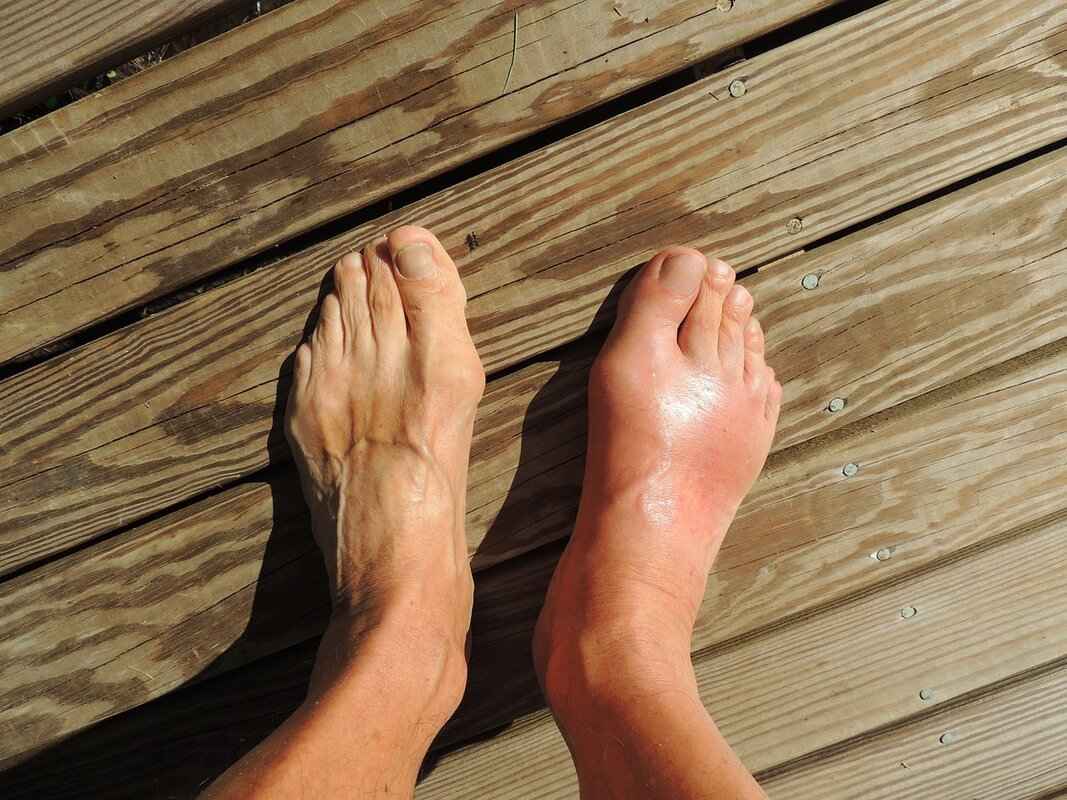This article explores effective strategies and insights for alleviating throbbing pain following a root canal procedure, providing practical advice and expert recommendations for a smoother recovery.
Understanding Root Canal Pain
After undergoing a root canal, patients often experience varying degrees of discomfort. This pain can be attributed to several factors, including inflammation, tissue damage, and the body’s natural healing response. Understanding these elements is crucial for managing pain effectively. Typically, the pain may last for a few days, but it is essential to monitor its intensity and duration to ensure that it falls within the normal range of post-operative symptoms.
Common Causes of Throbbing Pain
- Inflammation and Swelling: The body responds to dental procedures with inflammation, which can lead to swelling and discomfort. This natural response is essential for healing but can be painful.
- Infection Risks: In some cases, infections may develop post-procedure, leading to increased pain and complications. Recognizing the signs of infection is vital for prompt treatment.
Inflammation and Swelling
Inflammation is a common reaction to dental work, including root canals. When the pulp of the tooth is removed, the surrounding tissues can become inflamed, resulting in throbbing pain. To manage inflammation, patients can apply ice packs to the affected area for 15-20 minutes at a time, which can help reduce swelling and numb the pain. Additionally, over-the-counter anti-inflammatory medications, such as ibuprofen, can be beneficial in alleviating discomfort.
How Inflammation Occurs
During a root canal, the dentist removes infected or damaged tissue from the tooth. This process can lead to minor trauma in the surrounding areas, triggering an inflammatory response. Understanding this biological process can help patients better cope with the pain and anticipate the healing timeline.
Managing Inflammation
To effectively manage inflammation, patients should consider the following strategies:
- Apply ice packs intermittently to reduce swelling.
- Take prescribed or over-the-counter anti-inflammatory medications as directed.
- Maintain a semi-upright position to minimize pressure on the affected area.
Infection Risks
Infections can complicate recovery after a root canal. They may arise from bacteria that were not completely eliminated during the procedure or from new bacteria entering the area. Symptoms of infection may include increased pain, swelling, fever, or discharge from the gums. If any of these symptoms occur, it is crucial to contact your dentist immediately for evaluation and potential treatment.
Signs of Infection
Recognizing the early signs of infection is vital for prompt treatment. Common symptoms include:
- Increased pain that worsens over time.
- Swelling in the gums or face.
- Fever or chills.
- Unpleasant taste or odor in the mouth.
Treatment Options for Infections
If an infection occurs, it is essential to seek professional treatment. Dentists may prescribe antibiotics to combat the infection or, in some cases, perform a retreatment of the root canal to eliminate the source of the problem. Prompt intervention can prevent further complications and alleviate pain.
Post-Procedure Care Tips
Proper aftercare can significantly impact recovery. Here are some essential tips for managing pain and ensuring a smooth healing process:
- Medication Management: Understanding which medications to take can help manage pain effectively. Consult your dentist about the best options for your specific situation.
- Dietary Recommendations: Soft foods are recommended in the initial days following the procedure. Foods like yogurt, smoothies, and mashed potatoes can minimize discomfort while providing necessary nutrients.
When to Contact Your Dentist
Knowing when to seek professional help is crucial. Patients should reach out to their dentist if:
- Persistent pain continues despite medication.
- Unusual symptoms develop, such as fever or swelling.
Alternative Pain Relief Methods
Exploring alternative methods can provide additional relief. Some options include:
- Heat Therapy: Applying warmth to the area can help relax muscles and alleviate discomfort.
- Mindfulness and Relaxation Techniques: Practices such as deep breathing and meditation can enhance pain management by reducing stress and anxiety.
Long-Term Care and Maintenance
Ongoing dental care is essential for maintaining oral health. Regular check-ups can catch potential issues early, and good oral hygiene practices will support long-term recovery and health.

Understanding Root Canal Pain
Pain after a root canal can be concerning for many patients. This discomfort is often unexpected, especially given the common perception that root canal procedures are straightforward and pain-free. Understanding the underlying reasons for this pain can help patients manage their recovery more effectively. Here, we delve into the various factors contributing to post-root canal pain and what patients can anticipate during their healing journey.
Firstly, it’s important to recognize that some level of discomfort is normal following a root canal. The procedure involves removing the infected or damaged pulp from inside the tooth, which can lead to inflammation and tenderness in the surrounding tissues. This inflammation is a natural response of the body as it begins to heal. Patients may experience throbbing pain that can last for a few days to a week, depending on individual circumstances and the complexity of the procedure.
- Inflammation: As the body responds to the treatment, swelling and inflammation can occur, resulting in pain. This is typically managed with over-the-counter anti-inflammatory medications.
- Bone Healing: The bone surrounding the tooth may also need time to heal, contributing to discomfort. This process can take several weeks, particularly if there was significant bone loss prior to the procedure.
- Nerve Sensitivity: The nerves in the area may remain sensitive for a while after the procedure. This sensitivity can cause intermittent pain or discomfort.
Moreover, patients should be aware of the potential for complications. In rare cases, an infection may develop after a root canal, which can lead to increased pain and swelling. Signs of infection include fever, persistent pain that worsens over time, and swelling that does not subside. If any of these symptoms occur, it is crucial to contact your dentist promptly for evaluation and treatment.
During the healing process, patients can expect a gradual reduction in pain as the inflammation subsides and the tissues begin to heal. It is vital to follow post-procedure care instructions provided by the dentist, which often include recommendations for pain management, dietary restrictions, and oral hygiene practices. By adhering to these guidelines, patients can facilitate a smoother recovery and alleviate discomfort more effectively.
In summary, while pain after a root canal can be concerning, understanding the reasons behind it can empower patients to manage their recovery better. With proper care and attention to symptoms, most individuals will experience a significant reduction in pain as they heal.

Common Causes of Throbbing Pain
Experiencing throbbing pain after a root canal can be distressing and may raise concerns about the healing process. Understanding the underlying causes of this discomfort is essential for effective management and recovery. Below, we delve into the most common reasons for throbbing pain post-root canal, providing insights into how they can be addressed.
- Inflammation and Swelling
- Infection
- Post-Operative Sensitivity
- Improper Filling or Sealing
- Nerve Irritation
Inflammation is a natural response of the body to any surgical procedure, including root canals. When the dental pulp is removed, the surrounding tissues may become inflamed, leading to discomfort. This inflammation can cause swelling, which exerts pressure on the nerves, resulting in a throbbing sensation. Managing this inflammation is crucial. Applying ice packs to the affected area for 15-20 minutes can reduce swelling. Additionally, over-the-counter anti-inflammatory medications, such as ibuprofen, can provide relief.
Infections are a potential complication following a root canal. If bacteria remain in the tooth or surrounding tissues after the procedure, they can multiply, leading to an infection. Symptoms of infection may include increased pain, swelling, and even fever. It is vital to recognize these signs early. If you suspect an infection, contacting your dentist immediately is crucial for prompt treatment, which may include antibiotics or further dental intervention.
Some patients may experience heightened sensitivity in the tooth that underwent the root canal. This sensitivity can manifest as throbbing pain, especially when exposed to hot or cold temperatures. It is essential to note that this sensitivity is often temporary and should subside as the healing progresses. During this time, avoiding extreme temperatures and using desensitizing toothpaste may help alleviate discomfort.
After a root canal, the tooth is typically filled and sealed to prevent further infection. However, if the filling is not done correctly, it can lead to trapped bacteria and subsequent pain. If you experience persistent throbbing pain, it may indicate that the filling needs to be evaluated or redone. Regular follow-ups with your dentist can help ensure that the filling remains intact and effective.
During a root canal, the nerves in the tooth are often affected. Even after the procedure, some patients may experience nerve irritation, leading to throbbing pain. This irritation can result from inflammation or pressure on the nerves. If this pain persists, it is important to discuss it with your dentist, as they may recommend additional treatment options to alleviate the discomfort.
In summary, understanding the common causes of throbbing pain post-root canal is vital for effective management. By recognizing symptoms early and following proper care guidelines, patients can navigate their recovery more smoothly. Always consult with your dentist if you have concerns about pain levels or other symptoms following your procedure.
Inflammation and Swelling
Inflammation is a natural biological response that occurs when tissues are damaged, such as during dental procedures like root canals. This response is part of the body’s healing process and typically involves the release of various chemicals that increase blood flow to the affected area, resulting in redness, heat, swelling, and pain. Understanding the role of inflammation can help patients manage pain effectively during recovery.
- How Inflammation Affects Pain: After a root canal, the inflammation can lead to throbbing pain as the body works to repair the damaged tissues. The pain is often a result of the pressure from swelling in the tissues surrounding the tooth.
- Typical Duration of Inflammation: In most cases, inflammation peaks within the first 48 hours post-procedure and may gradually subside within a week. However, individual healing times can vary.
Understanding the Biological Processes
When a root canal is performed, the dentist removes the infected or damaged pulp from inside the tooth. This process can cause trauma to the surrounding tissues, triggering an inflammatory response. The body sends white blood cells to the site of injury, which release substances that cause blood vessels to expand, leading to increased blood flow. This is essential for delivering nutrients and immune cells to promote healing.
| Inflammation Process | Effects |
|---|---|
| Increased blood flow | Redness and heat |
| Release of inflammatory mediators | Swelling and pain |
| Immune response activation | Healing and tissue repair |
Managing Inflammation Effectively
To alleviate discomfort caused by inflammation, patients can adopt several strategies:
- Ice Therapy: Applying an ice pack to the affected area for 15-20 minutes can help reduce swelling and numb the pain.
- Anti-Inflammatory Medications: Over-the-counter medications such as ibuprofen can effectively manage pain and reduce inflammation. Always consult with your dentist before taking any medication.
- Rest and Elevation: Keeping your head elevated while resting can help minimize swelling, especially during the first few days after the procedure.
- Hydration: Staying well-hydrated can support overall healing and help flush out toxins from the body.
In summary, while inflammation and swelling are common after a root canal, understanding these processes and employing effective management strategies can significantly ease discomfort and promote a smoother recovery. By taking proactive steps, patients can mitigate pain and facilitate healing, leading to a more positive dental experience.
How Inflammation Occurs
Inflammation is a crucial biological process that plays a significant role in the body’s response to injury and infection. Understanding how inflammation occurs, especially in the context of dental procedures like root canals, can help patients manage their expectations and alleviate concerns about post-operative pain.
When a root canal is performed, the dentist removes infected or damaged tissue from the tooth’s pulp chamber. This process inherently causes some level of tissue damage, which triggers the body’s inflammatory response. The primary aim of this response is to initiate healing and prevent further injury. Here’s a closer look at the steps involved in inflammation:
- Initial Injury: The moment tissue is damaged during the root canal, the body recognizes this injury. Cells in the affected area release chemical signals known as cytokines, which alert the immune system to the problem.
- Vasodilation: In response to these signals, blood vessels in the area dilate, allowing more blood to flow to the site of injury. This increased blood flow brings essential nutrients and immune cells to the area, which are vital for healing.
- Increased Permeability: Alongside vasodilation, the blood vessels become more permeable. This allows fluids, proteins, and white blood cells to exit the bloodstream and enter the damaged tissue, leading to swelling.
- Immune Response: White blood cells, particularly neutrophils and macrophages, migrate to the site of injury. They help eliminate bacteria and debris, further contributing to the inflammatory process.
- Resolution: Once the initial threat is neutralized, the body works to resolve inflammation. Anti-inflammatory signals are released to reduce swelling and restore normal function.
During this inflammatory process, patients may experience swelling and throbbing pain as a result of increased pressure in the affected area. This discomfort is a normal part of healing but can be managed effectively with appropriate care.
In summary, understanding how inflammation occurs can empower patients to better cope with the aftermath of a root canal. By being aware of the body’s natural healing processes, patients can approach their recovery with patience and informed expectations. Utilizing methods to manage inflammation, such as applying ice packs or taking recommended medications, can significantly ease discomfort and promote a smoother recovery.
Managing Inflammation
is a crucial aspect of recovery after a root canal procedure. Inflammation is the body’s natural response to injury or infection, and while it serves a protective purpose, it can also lead to significant discomfort and pain. Understanding how to effectively manage inflammation can not only alleviate pain but also promote a smoother healing process.
After a root canal, inflammation typically arises as a result of tissue manipulation and potential irritation of the surrounding areas. This response can lead to swelling, tenderness, and throbbing pain in the affected tooth and gums. Therefore, addressing inflammation should be a priority for patients seeking relief.
Here are some practical tips for managing inflammation effectively:
- Ice Packs: Applying an ice pack to the affected area can significantly reduce swelling and numb the pain. Wrap ice in a cloth and apply it for 15-20 minutes every hour as needed during the first 48 hours after the procedure.
- Anti-Inflammatory Medications: Over-the-counter medications such as ibuprofen can help reduce inflammation and alleviate pain. Always consult with your dentist before starting any medication to ensure it is appropriate for your situation.
- Elevation: Keeping your head elevated while resting can help reduce swelling. Use extra pillows to prop yourself up, especially during the first few nights after the procedure.
- Hydration: Staying well-hydrated is essential for overall health and can assist in the healing process. Drink plenty of fluids, but avoid using straws, as the suction can disturb the healing area.
- Gentle Oral Hygiene: Maintaining good oral hygiene is crucial, but be gentle around the affected area. Use a soft-bristled toothbrush and avoid aggressive brushing to prevent further irritation.
- Warm Saltwater Rinses: After the first 48 hours, warm saltwater rinses can help soothe the inflamed tissues and promote healing. Mix a teaspoon of salt in a cup of warm water and rinse gently.
In addition to these methods, it is important to monitor your symptoms. If the inflammation persists or worsens, it may indicate a complication such as infection, requiring prompt dental evaluation. Regular follow-ups with your dentist can help ensure that your recovery is on track and address any concerns that may arise.
In conclusion, effective management of inflammation post-root canal is vital for reducing pain and promoting recovery. By utilizing these practical tips and maintaining open communication with your dental professional, you can navigate the healing process with greater ease and comfort.
Infection Risks
After undergoing a root canal, patients often experience a range of sensations, including discomfort and swelling. However, one of the more concerning complications that can arise is the risk of infection. Understanding how infections can develop post-procedure and their potential to exacerbate pain is crucial for a smoother recovery.
Infections following a root canal typically occur when bacteria invade the tooth or surrounding tissues. This can happen for several reasons:
- Inadequate Cleaning: If the root canal system is not thoroughly cleaned and disinfected, residual bacteria can lead to infection.
- Compromised Immune System: Patients with weakened immune systems may be more susceptible to infections.
- Post-Procedure Care: Neglecting aftercare instructions can increase the risk of developing an infection.
Recognizing the early signs of an infection is vital for prompt treatment. Common symptoms include:
- Persistent Pain: While some discomfort is expected, pain that worsens over time may indicate an infection.
- Swelling: Increased swelling around the treated area can signal an infection.
- Fever: A low-grade fever may accompany an infection, indicating that the body is fighting off bacteria.
If an infection is suspected, it is essential to seek dental care immediately. Treatment options may include:
- Antibiotics: A course of antibiotics can help eliminate bacteria and reduce the infection’s severity.
- Drainage: In some cases, the dentist may need to drain any abscess to relieve pressure and promote healing.
- Retreatment: If the infection persists, a retreatment of the root canal may be necessary to ensure all infected tissue is removed.
In addition to recognizing symptoms and seeking treatment, patients can take proactive measures to reduce their risk of infection:
- Follow Aftercare Instructions: Adhering to your dentist’s post-procedure care guidelines is crucial for preventing infections.
- Maintain Oral Hygiene: Keeping the mouth clean can help minimize the risk of bacterial growth.
- Regular Check-Ups: Scheduling follow-up appointments allows your dentist to monitor healing and catch potential issues early.
In conclusion, while infections can complicate recovery after a root canal, understanding the risks and taking appropriate preventive measures can significantly reduce the likelihood of complications. By staying vigilant and maintaining open communication with your dentist, you can foster a smoother recovery process.
Signs of Infection
Recognizing the early signs of infection is vital for prompt treatment. Infections can complicate recovery after dental procedures, particularly after a root canal. Awareness of the symptoms can lead to quicker intervention, minimizing discomfort and preventing further complications. Here, we outline common symptoms that indicate an infection may be present, helping patients understand when to seek professional help.
- Persistent Pain: While some discomfort is expected after a root canal, persistent pain that doesn’t improve over time may indicate an infection. This pain can be sharp or throbbing and often intensifies rather than subsides.
- Swelling: Mild swelling is common post-procedure, but significant swelling around the gums or face could signal an infection. If the swelling spreads or becomes painful, it’s crucial to consult your dentist.
- Fever: A low-grade fever may occur after dental work, but a high fever (above 100.4°F or 38°C) can be a sign of systemic infection. This symptom should not be ignored.
- Discharge: The presence of pus or discharge from the tooth or gums is a clear indicator of infection. This may be accompanied by an unpleasant taste in the mouth.
- Redness: Look for redness or inflammation in the gums surrounding the treated tooth. Healthy gums should be pink and firm, so any changes could indicate a problem.
- Bad Breath: Persistent bad breath or a foul taste in the mouth can also be a sign of infection. This may occur due to bacteria buildup and should prompt a visit to the dentist.
Understanding these symptoms is essential for effective post-procedure care. If you experience any of these signs, it is crucial to contact your dentist immediately. Early intervention can lead to better outcomes and reduce the risk of complications.
In addition to recognizing symptoms, it’s important to adhere to post-procedure care guidelines provided by your dentist. This includes taking prescribed medications, maintaining good oral hygiene, and attending follow-up appointments. Ensuring that you follow these recommendations can help prevent infections and promote healing.
In summary, being vigilant about the signs of infection after a root canal can save you from unnecessary pain and complications. Always trust your instincts; if something feels off, don’t hesitate to seek professional advice. Your oral health is paramount, and timely treatment can make all the difference in your recovery journey.
Treatment Options for Infections
Infections following a root canal can lead to significant discomfort and complications if not addressed promptly. Understanding the treatment options available is essential for effective management and recovery. This section will explore various approaches to treating infections that may arise post-procedure, ensuring patients are well-informed about their options.
After a root canal, the treated tooth may still be susceptible to infections due to residual bacteria or complications during the procedure. If an infection occurs, it is crucial to seek treatment promptly to prevent further complications such as abscess formation or systemic infections.
One of the most common treatments for infections following a root canal is the use of antibiotics. These medications help eliminate bacterial infections and are often prescribed based on the severity and type of infection.
- Penicillin – A common choice for dental infections, effective against a variety of bacteria.
- Amoxicillin – Often used due to its broad-spectrum efficacy and favorable side effect profile.
- Clindamycin – An alternative for patients allergic to penicillin, effective against anaerobic bacteria.
It is important to complete the full course of antibiotics as prescribed, even if symptoms improve, to ensure the infection is fully eradicated.
If an abscess forms as a result of the infection, it may require surgical intervention. Drainage of the abscess is often necessary to relieve pain and allow the area to heal properly. This procedure typically involves:
- Local anesthesia to minimize discomfort.
- Incision of the abscess to allow pus and infected material to escape.
- Possibly placing a drain to facilitate ongoing drainage and promote healing.
After drainage, the dentist may prescribe antibiotics to prevent further infection.
In some cases, the initial root canal treatment may not have been entirely successful, necessitating retreatment. This involves:
- Removing the existing filling material.
- Cleaning and disinfecting the root canals again.
- Refilling the canals with new materials.
Retreatment can effectively resolve lingering infections and restore the health of the tooth.
If the infection persists despite treatment efforts, or if the tooth is severely compromised, extraction may be the only viable option. This involves:
- Removing the affected tooth to eliminate the source of infection.
- Discussing options for tooth replacement, such as implants or bridges.
Extraction is typically considered a last resort and should only be performed when all other treatment options have been exhausted.
After treatment for an infection, follow-up care is vital for ensuring complete recovery. Patients should:
- Attend all scheduled follow-up appointments to monitor healing.
- Maintain good oral hygiene practices to prevent future infections.
- Report any recurring symptoms to their dentist immediately.
By understanding the treatment options for infections post-root canal, patients can take proactive steps towards recovery and maintain their oral health effectively.

Post-Procedure Care Tips
are essential for a smooth recovery after a root canal. Proper aftercare can significantly impact recovery, helping to manage pain and ensuring the healing process progresses as expected. This section provides essential tips for managing discomfort and promoting healing.
After undergoing a root canal, patients often experience a range of sensations, from mild discomfort to more pronounced pain. Effective aftercare is crucial in mitigating these sensations and facilitating a smooth recovery. By adhering to recommended care guidelines, patients can enhance their healing process, reduce the risk of complications, and ultimately achieve better outcomes.
One of the most effective ways to manage pain post-root canal is through medication. Patients are typically prescribed pain relievers, which may include:
- Nonsteroidal Anti-Inflammatory Drugs (NSAIDs): These over-the-counter medications, such as ibuprofen, help reduce inflammation and alleviate pain.
- Prescription Pain Relievers: In some cases, dentists may prescribe stronger pain medications to manage severe discomfort.
It’s essential to follow the prescribed dosage and timing to ensure optimal pain management. If the pain persists despite medication, patients should consult their dentist for further evaluation.
What you eat can significantly influence your recovery after a root canal. A well-balanced diet rich in nutrients can promote healing. Consider the following dietary tips:
- Soft Foods: Initially, stick to soft foods like yogurt, mashed potatoes, and smoothies to avoid irritating the affected area.
- Hydration: Staying hydrated is crucial. Drink plenty of fluids, but avoid hot beverages immediately after the procedure.
- Avoid Hard and Crunchy Foods: Foods that require extensive chewing can put unnecessary pressure on the treated tooth, leading to discomfort.
Good oral hygiene is vital during the recovery phase. Patients should continue to brush and floss their teeth, but with care. Here are some tips:
- Gentle Brushing: Use a soft-bristled toothbrush and brush gently around the treated area to avoid irritation.
- Rinsing: After 24 hours, consider using a warm saltwater rinse to help keep the area clean and reduce inflammation.
Allowing your body to rest is crucial for healing. After the procedure, patients should:
- Avoid Strenuous Activities: Refrain from heavy lifting or intense exercise for a few days to prevent aggravating the treated area.
- Get Plenty of Sleep: Adequate sleep supports the body’s natural healing processes, so prioritize rest during recovery.
While some discomfort is expected, patients should be vigilant for signs of complications. If you experience:
- Severe Pain: Pain that worsens over time may indicate an infection or other issues.
- Swelling: Significant swelling that does not subside may require immediate attention.
In such cases, contacting your dentist promptly is essential to address potential complications effectively.
In summary, post-procedure care plays a vital role in ensuring a smooth recovery after a root canal. By managing pain effectively, adhering to dietary recommendations, maintaining good oral hygiene, allowing for adequate rest, and recognizing signs of complications, patients can enhance their healing process and minimize discomfort.
Medication Management
is a critical aspect of recovery after a root canal procedure. Understanding which medications to take can help manage pain effectively and promote healing. Patients often find themselves navigating a variety of options, both prescription and over-the-counter (OTC), to alleviate discomfort. This section aims to clarify these options and provide guidance on their appropriate use.
When it comes to pain relief, medications can be broadly categorized into two types: prescription medications and over-the-counter medications. Each category has its own benefits and considerations.
- Prescription Medications: These are typically stronger pain relievers that require a doctor’s approval. Common examples include:
- Opioids: Medications like hydrocodone or oxycodone may be prescribed for severe pain. While effective, they come with risks of dependency and side effects.
- NSAIDs: Non-steroidal anti-inflammatory drugs, such as ibuprofen or naproxen, are often prescribed to reduce inflammation and pain.
- Over-the-Counter Medications: These are accessible without a prescription and can be very effective for mild to moderate pain. Common OTC options include:
- Acetaminophen: This is a popular choice for pain relief and is generally well-tolerated. However, it does not reduce inflammation.
- Ibuprofen: An NSAID that not only alleviates pain but also reduces swelling, making it a dual-action option.
Choosing the right medication depends on several factors, including the severity of pain, any existing health conditions, and potential allergies. It’s essential to consult with your dentist or healthcare provider to determine the most suitable option for your individual situation.
Proper dosage and timing are crucial for effective pain management. Overusing medications can lead to side effects or complications. Here are some guidelines:
- Follow Instructions: Always adhere to the dosage recommendations provided by your healthcare provider or the instructions on the medication packaging.
- Timing Matters: Taking medications at regular intervals can help maintain consistent pain relief. For instance, NSAIDs may be more effective when taken before pain escalates.
While medications can provide relief, they can also come with potential side effects. It’s important to be aware of these and discuss them with your healthcare provider. Common side effects include:
- Gastrointestinal Issues: NSAIDs can cause stomach upset or ulcers if taken excessively.
- Dependency Risks: Opioids carry a risk of dependency and should be used cautiously.
In addition to medications, consider integrating alternative pain management strategies into your recovery plan. These can include:
- Cold Compresses: Applying ice packs can help reduce swelling and numb the pain.
- Relaxation Techniques: Mindfulness and breathing exercises can help manage pain perception.
In summary, effective is vital for alleviating pain after a root canal. By understanding the types of medications available, determining the right dosage, and being aware of potential side effects, patients can navigate their recovery more effectively. Always consult with a healthcare provider for personalized advice tailored to your specific needs.
Dietary Recommendations
After undergoing a root canal, what you eat can significantly impact your recovery. Proper nutrition not only helps in minimizing discomfort but also promotes healing. Here, we explore essential dietary choices that can aid in your recovery process.
First and foremost, staying hydrated is crucial. Drinking plenty of water can help flush out toxins and keep your body functioning optimally. Aim for at least 8 glasses of water a day. Avoid sugary drinks and caffeine, as they can contribute to inflammation and discomfort.
Soft Foods are your best friend during recovery. After a root canal, your mouth may be sensitive, making it difficult to chew. Opt for foods that require minimal chewing, such as:
- Mashed potatoes
- Applesauce
- Yogurt
- Soup (preferably warm, not hot)
- Scrambled eggs
These options are not only easier to consume but also provide essential nutrients necessary for healing.
Anti-Inflammatory Foods can play a pivotal role in your recovery. Incorporating foods rich in omega-3 fatty acids, antioxidants, and vitamins can help reduce inflammation. Consider adding:
- Fatty fish (like salmon and mackerel)
- Leafy greens (such as spinach and kale)
- Nuts and seeds (like walnuts and flaxseeds)
- Fruits (especially berries and oranges)
These foods not only promote healing but also help in managing pain and discomfort.
Avoid Certain Foods during your recovery. It’s essential to steer clear of hard, crunchy, or sticky foods that can irritate the treatment area. Foods such as:
- Hard candies
- Chips
- Popcorn
- Ice
These can cause unnecessary pain and prolong the healing process.
Consider Supplements if your diet lacks certain nutrients. Vitamin C and zinc are particularly beneficial for healing. A multivitamin can also help ensure you’re getting all the necessary nutrients to support your recovery.
In summary, your dietary choices play a vital role in your recovery after a root canal. By focusing on hydration, soft foods, anti-inflammatory options, and avoiding irritants, you can facilitate a smoother healing process. Always consult with your dentist or a nutritionist for personalized advice tailored to your specific needs.

When to Contact Your Dentist
Knowing when to seek professional help after a root canal is crucial for ensuring a smooth recovery. While some discomfort is expected, there are specific signs that indicate a need for dental consultation. This section outlines these signs in detail, helping you understand when it’s time to reach out to your dentist.
- Persistent Pain: After a root canal, it is normal to experience some discomfort. However, if you notice that the pain is persistent or worsening over time, it may be a sign of complications. Persistent pain that does not subside with over-the-counter medications could indicate issues such as infection or incomplete cleaning of the tooth. If this pain lasts more than a few days, it’s essential to contact your dentist for a thorough examination.
- Increased Swelling: Swelling is a common response to dental procedures, but if you observe increased swelling around the treated area, it may suggest an infection or an allergic reaction. Mild swelling can be managed with ice packs and anti-inflammatory medications, but significant or prolonged swelling should be evaluated by a professional.
- Fever: A fever following a root canal is not typical. If you develop a fever (a temperature above 100.4°F or 38°C), it could indicate an underlying infection. In such cases, it is crucial to seek dental care immediately, as untreated infections can lead to more severe health issues.
- Unusual Discharge: The presence of pus or any unusual discharge from the treated tooth or gums is a serious concern. This may indicate an infection that requires prompt treatment. If you notice any discharge, do not hesitate to contact your dentist.
- Changes in Bite: After a root canal, if you experience a noticeable change in your bite or if the tooth feels uneven when you chew, it’s important to consult your dentist. Changes in bite can lead to further complications and discomfort if not addressed promptly.
- Allergic Reactions: Some patients may experience allergic reactions to medications prescribed post-procedure. Symptoms such as rashes, itching, or difficulty breathing should be treated as emergencies. If you suspect an allergic reaction, seek immediate medical attention.
In summary, recognizing these signs is vital for ensuring your recovery after a root canal. While some discomfort is normal, being vigilant about your symptoms will help you determine when it’s necessary to seek professional help. Always trust your instincts—if something feels off, it’s better to err on the side of caution and consult your dentist. Early intervention can prevent complications and lead to a quicker recovery.
Persistent Pain
Experiencing after a root canal can be alarming for many patients. While some discomfort is expected following the procedure, pain that does not subside or worsens over time may indicate underlying complications. Understanding what constitutes persistent pain, its potential causes, and the appropriate steps to take is crucial for effective management.
What is Considered Persistent Pain? Persistent pain is typically defined as pain that lasts longer than expected during the healing process, often exceeding a few days to a week. This type of pain may feel throbbing, sharp, or even constant, and can be localized around the treated tooth or radiate to surrounding areas. Patients should be aware that while mild discomfort is normal, any pain that intensifies or does not improve with over-the-counter pain relief should raise concern.
Potential Causes of Persistent Pain
- Infection: One of the most common reasons for prolonged pain is infection. If bacteria enter the tooth or surrounding tissues during or after the procedure, it can lead to inflammation and pain.
- Incomplete Treatment: In some cases, the root canal may not have been fully successful in removing all infected tissue, leading to ongoing discomfort.
- Allergic Reactions: Some patients may experience allergic reactions to materials used during the procedure, resulting in persistent pain.
- Jaw Issues: Sometimes, pain may arise from jaw clenching or grinding, which can occur subconsciously during recovery.
Steps to Take for Persistent Pain
If you experience persistent pain after a root canal, it is essential to take the following steps:
- Contact Your Dentist: The first step is to reach out to your dental professional. They can assess your symptoms and determine if further treatment is necessary.
- Monitor Symptoms: Keep a record of your pain levels, any additional symptoms, and when they occur. This information can help your dentist make an informed diagnosis.
- Follow Post-Operative Instructions: Ensure that you are following all post-operative care instructions provided by your dentist, including medication management and dietary recommendations.
- Consider Pain Management Options: Discuss alternative pain relief methods with your dentist, such as prescription medications or therapies that may alleviate discomfort.
In conclusion, while some level of discomfort is a normal part of the recovery process after a root canal, should not be ignored. By understanding the signs and taking appropriate action, patients can ensure a smoother recovery and address any complications that may arise.
Unusual Symptoms
can often be a red flag indicating that something is amiss following a dental procedure, such as a root canal. While some discomfort is expected, certain symptoms may suggest complications that require immediate dental attention. It is crucial to be aware of these signs so that timely intervention can be sought, ensuring a smoother recovery.
After a root canal, patients might experience a range of symptoms. However, if any of the following arise, it is essential to contact your dentist without delay:
- Severe or Worsening Pain: While some pain is normal, if it escalates or does not subside after a few days, it may indicate complications such as infection or improper healing.
- Swelling Beyond the Norm: Minor swelling is typical, but if the swelling increases significantly or spreads to other areas of your face, it could signal an underlying issue.
- Fever: A fever may suggest an infection. If you experience a temperature above 100.4°F (38°C), it is advisable to consult your dentist.
- Persistent Bleeding: Any ongoing bleeding from the treated area that does not stop after applying pressure could indicate a serious problem.
- Bad Taste or Odor: A foul taste or odor coming from the mouth can be a sign of infection, necessitating immediate professional evaluation.
- Numbness: Prolonged numbness in the treated area or surrounding areas may indicate nerve damage or complications associated with the procedure.
Recognizing these symptoms is vital for ensuring appropriate care. If you notice any of the above signs, do not hesitate to reach out to your dentist. They can provide a thorough examination and determine the best course of action to address your concerns.
In addition to physical symptoms, it is also important to monitor your emotional well-being after a root canal. Anxiety and stress can exacerbate the perception of pain. Engaging in relaxation techniques, such as deep breathing or mindfulness, can help manage these feelings and contribute to a more comfortable recovery experience.
Overall, being vigilant about unusual symptoms following a root canal is essential. By understanding what to look for and responding promptly to any concerning signs, patients can significantly enhance their recovery process and ensure their dental health remains on track.

Alternative Pain Relief Methods
After undergoing a root canal, many patients experience discomfort that can be challenging to manage. While traditional pain relief methods, such as over-the-counter medications, are commonly used, exploring can provide additional comfort and promote healing. This section will discuss various holistic approaches to managing pain after a root canal, including natural therapies, lifestyle adjustments, and complementary techniques.
Many individuals seek out natural remedies as a way to alleviate pain without relying solely on pharmaceuticals. Some popular options include:
- Turmeric: Known for its anti-inflammatory properties, turmeric can be consumed in food or taken as a supplement to help reduce pain and swelling.
- Ginger: Another powerful anti-inflammatory, ginger can be brewed as tea or added to meals to aid in pain relief.
- Eucalyptus Oil: This essential oil can be diluted and applied topically to the affected area for its soothing properties.
Applying heat or cold can be effective in managing pain after a root canal. Heat therapy helps to relax muscles and increase blood flow, which can aid in pain relief. A warm compress can be applied for 15-20 minutes at a time. Conversely, cold therapy can help reduce swelling and numb the area. Ice packs wrapped in a cloth can be applied for similar durations.
Managing pain isn’t solely about physical treatments; mindfulness and relaxation techniques can also play a significant role. Practices such as meditation, deep breathing exercises, and yoga can help reduce stress and improve overall well-being, which may enhance pain management. Engaging in these practices regularly can help patients better cope with discomfort during recovery.
Acupuncture and acupressure are ancient techniques that involve stimulating specific points on the body to relieve pain. Acupuncture uses fine needles to promote healing and reduce pain, while acupressure applies pressure to these points using fingers or tools. Many patients report significant pain relief through these methods, making them a viable option for post-root canal recovery.
Incorporating herbal supplements and teas into your routine can also assist in pain management. Herbal teas like chamomile and peppermint can provide soothing effects, while supplements such as boswellia and willow bark may offer anti-inflammatory benefits. Always consult with a healthcare professional before starting any new supplements, especially if you are taking other medications.
Engaging in gentle physical activity can improve circulation and promote healing. While strenuous exercise should be avoided immediately after a root canal, light activities such as walking or stretching can be beneficial. Gentle movement encourages blood flow, which can aid in reducing pain and stiffness.
Staying well-hydrated and consuming a balanced diet rich in vitamins and minerals can support the body’s healing process. Foods high in antioxidants, such as berries and leafy greens, can help reduce inflammation and promote recovery. Additionally, drinking plenty of water helps to keep the body functioning optimally.
In conclusion, exploring alternative pain relief methods can significantly enhance the recovery experience after a root canal. By incorporating natural remedies, mindfulness techniques, and gentle physical activity, patients can find effective ways to manage their discomfort and promote healing.
Heat Therapy
is a widely recognized method for alleviating discomfort and promoting relaxation, particularly in the context of post-dental procedures like root canals. This section will explore how applying heat can be beneficial, the different methods of heat application, and important precautions to consider.
Heat therapy involves the application of warmth to the affected area to help reduce pain and stiffness. It works by increasing blood flow, which can promote healing and relaxation in the muscles and tissues surrounding the area of discomfort. This method is particularly useful after a root canal, where inflammation and soreness may occur.
- Pain Relief: Heat can significantly reduce pain by relaxing tight muscles and soothing discomfort.
- Improved Circulation: The application of heat increases blood flow, which can aid in the healing process by delivering essential nutrients to the affected area.
- Muscle Relaxation: Heat can help to ease muscle tension, which is often a contributing factor to pain following dental procedures.
- Stress Reduction: The soothing effect of heat can promote relaxation, helping to alleviate anxiety associated with dental recovery.
There are several effective methods for applying heat:
- Heating Pads: These can be placed directly on the jaw or cheek for targeted relief. Make sure to follow the manufacturer’s instructions for safe use.
- Warm Compresses: Soaking a cloth in warm water and applying it to the affected area can provide gentle heat therapy.
- Warm Baths: Immersing the body in warm water can relax muscles and improve overall comfort.
- Hot Water Bottles: Filling a bottle with warm water and placing it against the cheek can also be effective.
While heat therapy can be beneficial, it is essential to take certain precautions to prevent potential complications:
- Temperature Control: Always ensure that the heat source is at a comfortable temperature to avoid burns. Test the heat on a small area first.
- Duration: Limit the application of heat to 15-20 minutes at a time to prevent overheating the area.
- Consult Your Dentist: It’s important to discuss the use of heat therapy with your dentist, especially if you have underlying health conditions or if your pain persists.
- Alternating with Cold Therapy: In some cases, alternating heat with cold therapy can provide optimal relief, especially if swelling is present.
While heat therapy can be beneficial in many situations, there are times when it should be avoided:
- Acute Inflammation: If swelling is significant, it may be better to use cold therapy to reduce inflammation.
- Infection: Heat can exacerbate infections, so it’s crucial to consult a healthcare professional if you suspect an infection.
- Chronic Conditions: Individuals with certain chronic conditions, such as diabetes, should be cautious and consult with a healthcare provider before using heat.
In conclusion, can be a valuable tool for managing discomfort after a root canal procedure. By understanding its benefits, methods of application, and necessary precautions, patients can enhance their recovery experience and promote better healing.
Mindfulness and Relaxation Techniques
Mental well-being plays a significant role in pain perception. This subsection explores mindfulness and relaxation techniques that can enhance pain management.Pain is not merely a physical sensation; it is intricately linked to our mental state. Understanding the connection between mental well-being and pain perception can empower individuals to manage discomfort more effectively. Mindfulness and relaxation techniques have gained recognition as valuable tools in pain management, particularly after procedures like root canals.
Mindfulness involves being fully present in the moment, acknowledging thoughts and feelings without judgment. This practice can significantly reduce pain perception by altering the brain’s response to discomfort. Research indicates that mindfulness can lead to decreased pain levels and improved emotional resilience.
- Breathing Exercises: Focusing on your breath can ground you in the present moment. Try inhaling deeply through your nose, holding for a few seconds, and exhaling slowly through your mouth.
- Body Scan Meditation: This technique involves mentally scanning your body for areas of tension. Acknowledge any discomfort without trying to change it, allowing it to exist as part of your experience.
- Guided Imagery: Visualizing calming scenes or experiences can help distract from pain. Use online resources or apps that offer guided imagery sessions tailored for pain relief.
Alongside mindfulness, relaxation techniques can further enhance pain management. These methods help lower stress levels and promote a sense of calm, which can be beneficial for individuals experiencing post-procedural discomfort.
- Progressive Muscle Relaxation: This technique involves tensing and then relaxing different muscle groups. Start from your toes and work your way up, paying attention to how your body feels.
- Yoga and Stretching: Gentle yoga or stretching can release tension in the body. Focus on poses that promote relaxation and deep breathing.
- Visualization Techniques: Similar to guided imagery, visualization can be a powerful tool. Picture a peaceful scene or a place where you feel safe and comfortable.
Integrating mindfulness and relaxation techniques can create a comprehensive approach to pain management. For instance, practicing mindfulness during relaxation exercises can enhance their effectiveness. As you engage in deep breathing or progressive muscle relaxation, focus on your breath and the sensations in your body, allowing yourself to be fully present.
Incorporating mindfulness and relaxation techniques into your pain management strategy can significantly improve your overall experience during recovery. By fostering a deeper connection between mind and body, individuals can enhance their capacity to cope with discomfort and promote healing. As you explore these techniques, remember that consistency is key; regular practice can lead to lasting benefits.

Long-Term Care and Maintenance
Ongoing dental care is essential for maintaining oral health. It is crucial to adopt long-term strategies that not only address immediate dental concerns but also prevent future issues. This section explores various methods to ensure a healthy mouth and a bright smile for years to come.
Long-term dental care plays a vital role in preventing serious dental problems. Regular visits to the dentist can help identify issues before they escalate, such as cavities, gum disease, and even oral cancer. By prioritizing dental health, individuals can avoid costly treatments and maintain overall well-being.
One of the most effective strategies for long-term dental health is scheduling regular dental check-ups. These visits typically occur every six months and include comprehensive examinations, professional cleanings, and x-rays as needed. During these appointments, dentists can:
- Identify early signs of decay or disease.
- Provide personalized advice on oral hygiene practices.
- Offer treatments such as sealants or fluoride applications to strengthen teeth.
Staying consistent with these visits is key to maintaining optimal oral health.
Good oral hygiene is fundamental for preventing dental issues. Here are some essential practices:
- Brushing: Brush your teeth at least twice a day using fluoride toothpaste. Ensure you brush for at least two minutes, covering all surfaces of your teeth.
- Flossing: Floss daily to remove food particles and plaque from between your teeth, where your toothbrush may not reach.
- Rinsing: Use an antibacterial mouthwash to help reduce plaque and prevent gum disease.
Incorporating these habits into your daily routine can significantly enhance your oral health.
Your diet plays a critical role in your dental health. Consuming a balanced diet rich in vitamins and minerals can strengthen your teeth and gums. Consider the following:
- Calcium-Rich Foods: Dairy products, leafy greens, and nuts help build strong teeth.
- Limit Sugary Snacks: Reducing sugar intake decreases the risk of cavities.
- Stay Hydrated: Drinking plenty of water helps wash away food particles and bacteria.
Making informed dietary choices contributes to long-term dental health and overall wellness.
Ignoring dental problems can lead to more severe complications. If you experience symptoms such as persistent pain, swelling, or bleeding gums, it is essential to contact your dentist immediately. Early intervention can prevent further damage and ensure a quicker recovery.
Investing in quality dental products can enhance your oral care routine. Look for:
- Electric Toothbrushes: These can provide a more thorough clean compared to manual brushes.
- Fluoride Mouthwash: Helps strengthen enamel and fight cavities.
- Interdental Cleaners: Useful for cleaning between teeth where floss may not suffice.
Choosing the right products tailored to your needs can improve your oral hygiene significantly.
Your overall health is closely linked to your dental health. Engaging in regular physical activity, managing stress, and avoiding tobacco products can contribute to better oral health outcomes. A holistic approach to well-being supports not just your mouth but your entire body.
In summary, ongoing dental care is crucial for maintaining oral health. By implementing these long-term strategies, individuals can prevent future dental issues and ensure a healthy mouth for years to come.
Regular Dental Check-Ups
are a cornerstone of maintaining optimal oral health. These routine visits to your dentist are essential for identifying potential issues before they escalate into serious problems. Understanding the importance of these appointments can significantly enhance your overall dental care experience.
During a typical check-up, patients can expect a thorough examination of their teeth, gums, and mouth. Dentists will often use various tools to check for cavities, gum disease, and other oral health issues. This process typically includes:
- Visual Examination: The dentist visually inspects your teeth and gums for any signs of decay or disease.
- X-rays: Radiographs may be taken to identify issues not visible during the visual exam, such as impacted teeth or bone loss.
- Professional Cleaning: A dental hygienist will clean your teeth to remove plaque and tartar buildup, which can lead to cavities and gum disease.
Regular check-ups are crucial for several reasons:
- Early Detection: Many dental issues, such as cavities and gum disease, can develop without noticeable symptoms. Regular visits allow for early detection and intervention.
- Preventive Care: Routine cleanings and examinations can prevent the need for more extensive treatments in the future, saving both time and money.
- Education: Dentists provide valuable advice on maintaining oral hygiene, including brushing techniques, flossing, and dietary recommendations.
Moreover, patients can expect personalized care tailored to their individual needs. Dentists often take the time to discuss any concerns or questions patients may have about their oral health. This open communication fosters a trusting relationship between the patient and the dentist, which is vital for effective dental care.
It is recommended that individuals visit their dentist at least twice a year for routine check-ups. However, those with specific dental issues or higher risk factors may need to schedule appointments more frequently. Your dentist will help determine the best schedule based on your unique health profile.
In summary, play a vital role in maintaining oral health. By prioritizing these appointments, patients can catch potential issues early, receive preventive care, and ensure their smiles remain healthy for years to come.
Oral Hygiene Practices
play a crucial role in recovery following a root canal procedure. Maintaining proper oral hygiene is essential not only for healing but also for ensuring long-term dental health. This section will discuss effective practices that can significantly enhance your recovery process and prevent future dental complications.
After a root canal, your mouth may be sensitive, and it is important to adopt gentle yet effective hygiene practices. Here are some key strategies to follow:
- Brush Gently: Use a soft-bristled toothbrush to clean your teeth. Avoid vigorous brushing around the treated area to prevent irritation. Aim to brush at least twice a day, but be gentle to avoid discomfort.
- Floss Carefully: Flossing is vital for removing food particles and plaque from between your teeth. However, be cautious around the root canal site. Use a gentle sawing motion to avoid damaging sensitive gums.
- Use Antimicrobial Mouthwash: Rinsing with an antimicrobial mouthwash can help reduce bacteria in your mouth, promoting healing. Choose a mouthwash that is alcohol-free to avoid further irritation.
- Stay Hydrated: Drinking plenty of water helps maintain saliva production, which is essential for oral health. Saliva helps wash away food particles and neutralizes acids that can harm your teeth.
- Avoid Hard and Sticky Foods: In the days following your procedure, steer clear of hard or sticky foods that can put pressure on the treated area. Opt for soft foods that are easier to chew and less likely to cause discomfort.
- Follow Your Dentist’s Instructions: Always adhere to the specific aftercare instructions provided by your dentist. They may recommend additional products or techniques tailored to your individual needs.
Regular Dental Check-Ups: After a root canal, it’s essential to continue with regular dental visits. These check-ups allow your dentist to monitor your recovery and address any issues that may arise. Consistent professional cleaning can also help maintain your oral hygiene.
Be Mindful of Symptoms: Pay attention to any unusual symptoms, such as prolonged pain, swelling, or sensitivity. These could indicate complications that require immediate attention. Early intervention is key to preventing further issues.
In summary, maintaining good oral hygiene after a root canal is vital for a smooth recovery and long-term dental health. By following these practices, you can help ensure that your mouth heals properly and reduce the risk of future dental problems.

Conclusion
How to Stop Throbbing Pain After a Root CanalThis article explores effective strategies and insights for alleviating throbbing pain following a root canal procedure, providing practical advice and expert recommendations for a smoother recovery.
Understanding Root Canal Pain
Pain after a root canal can be concerning. This section delves into the reasons behind this discomfort and what patients can expect during the healing process. It’s important to remember that some level of discomfort is normal as the body heals. However, understanding the underlying causes can help in managing the pain effectively.
Common Causes of Throbbing Pain
Identifying the reasons for throbbing pain is crucial for effective management. Here, we discuss the most common causes of pain post-root canal and how they can be addressed.
- Inflammation and Swelling: Inflammation is a natural response to dental procedures. It occurs as the body’s defense mechanism, leading to pain and discomfort.
- Infection Risks: Infections can complicate recovery after a root canal. They may develop if bacteria remain in the tooth or surrounding tissues.
- Nerve Sensitivity: The procedure may irritate the nerves in the area, causing heightened sensitivity and pain.
Managing Inflammation
Effective management of inflammation can significantly reduce pain. Here are some practical tips:
1. Apply ice packs to the affected area to reduce swelling.2. Take anti-inflammatory medications as prescribed by your dentist.3. Rest and avoid strenuous activities that may worsen inflammation.
Signs of Infection
Recognizing the early signs of infection is vital for prompt treatment. Common symptoms include:
- Increased pain that doesn’t subside with medication.
- Swelling that worsens instead of improving.
- Fever or chills, indicating a possible systemic infection.
Treatment Options for Infections
If an infection occurs, specific treatments are necessary. Options may include:
- Antibiotics to combat bacterial growth.
- Drainage of any abscess that may have formed.
- Follow-up root canal treatment if initial procedures were insufficient.
Post-Procedure Care Tips
Proper aftercare can significantly impact recovery. Essential tips include:
- Medication Management: Understanding which medications to take can help manage pain effectively.
- Dietary Recommendations: Soft foods and avoiding hot or cold items can minimize discomfort.
When to Contact Your Dentist
Knowing when to seek professional help is crucial. Signs that indicate a need for dental consultation include:
- Persistent Pain: Pain that does not improve over time.
- Unusual Symptoms: Symptoms like excessive bleeding or severe swelling.
Alternative Pain Relief Methods
Exploring alternative methods can provide additional relief. Consider:
- Heat Therapy: Applying heat can help alleviate discomfort and promote relaxation.
- Mindfulness and Relaxation Techniques: Practices like meditation can enhance pain management.
Long-Term Care and Maintenance
Ongoing dental care is essential for maintaining oral health. Long-term strategies include:
- Regular Dental Check-Ups: Routine check-ups can catch potential issues early.
- Oral Hygiene Practices: Effective practices to maintain oral hygiene post-root canal.
In summary, understanding the causes of pain and following appropriate care strategies can significantly improve recovery after a root canal. By implementing these tips and seeking professional advice when necessary, patients can manage their discomfort effectively.
Frequently Asked Questions
- What should I expect after a root canal?
After a root canal, it’s common to experience some discomfort and swelling. This is usually due to inflammation as your body heals. You might feel a throbbing sensation, but this should gradually improve over a few days.
- How can I manage the pain after my procedure?
Managing pain can be done effectively with over-the-counter medications like ibuprofen or acetaminophen. Applying ice packs to the affected area can also help reduce swelling and discomfort.
- When should I contact my dentist?
If you experience persistent pain that doesn’t improve or notice unusual symptoms like fever or excessive swelling, it’s crucial to contact your dentist. Early intervention can prevent complications.
- Are there alternative methods for pain relief?
Absolutely! Techniques like heat therapy and mindfulness practices can complement traditional pain management. These methods can enhance relaxation and help you cope better with discomfort.
- What dietary changes should I make post-root canal?
Soft foods are your best friend during recovery. Try to avoid hard, crunchy, or sticky foods that could irritate the area. Staying hydrated and consuming nutritious meals will promote healing.













